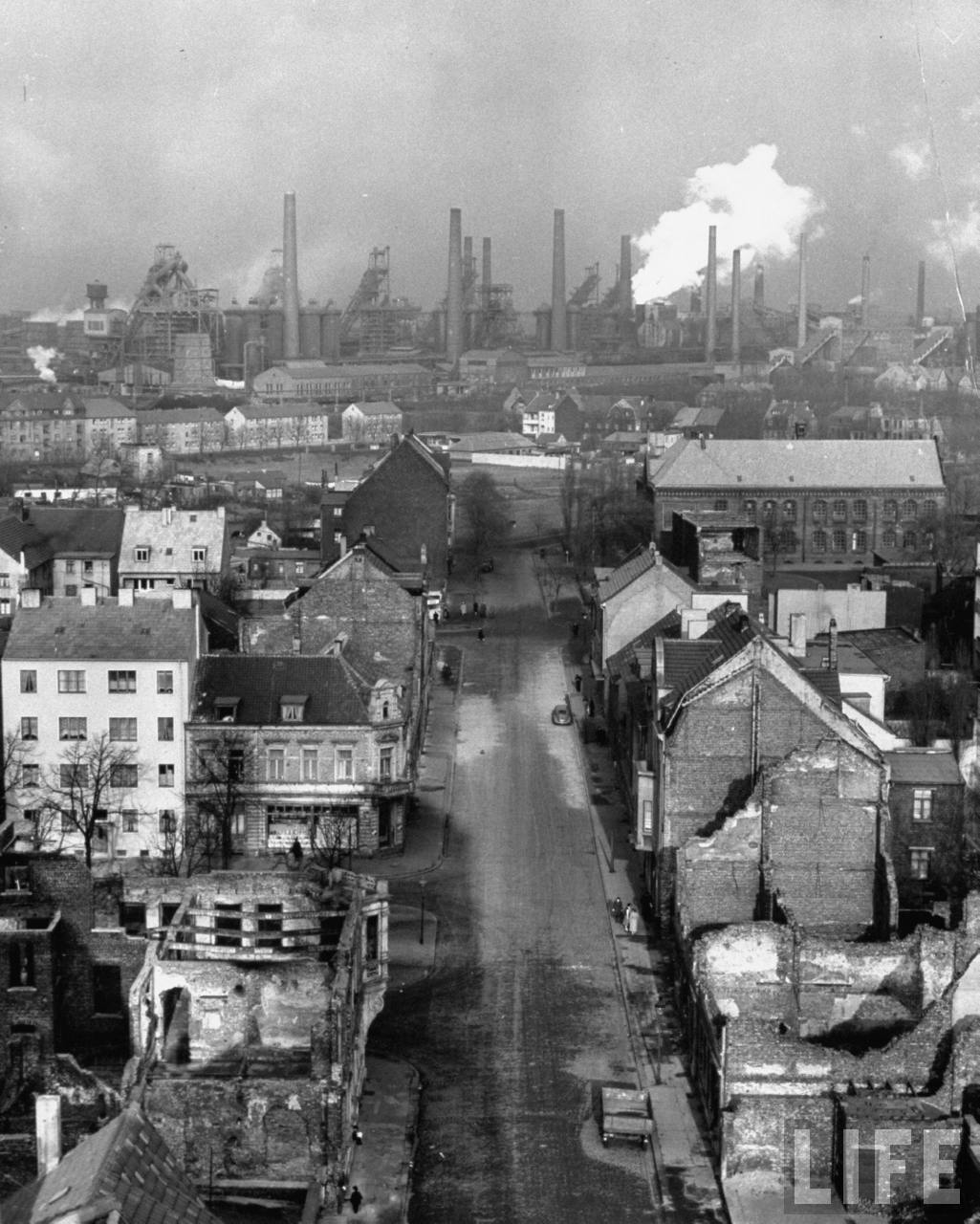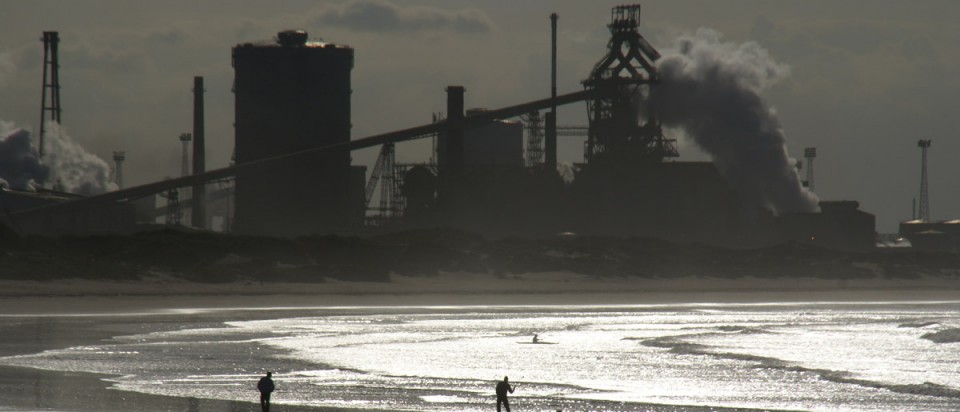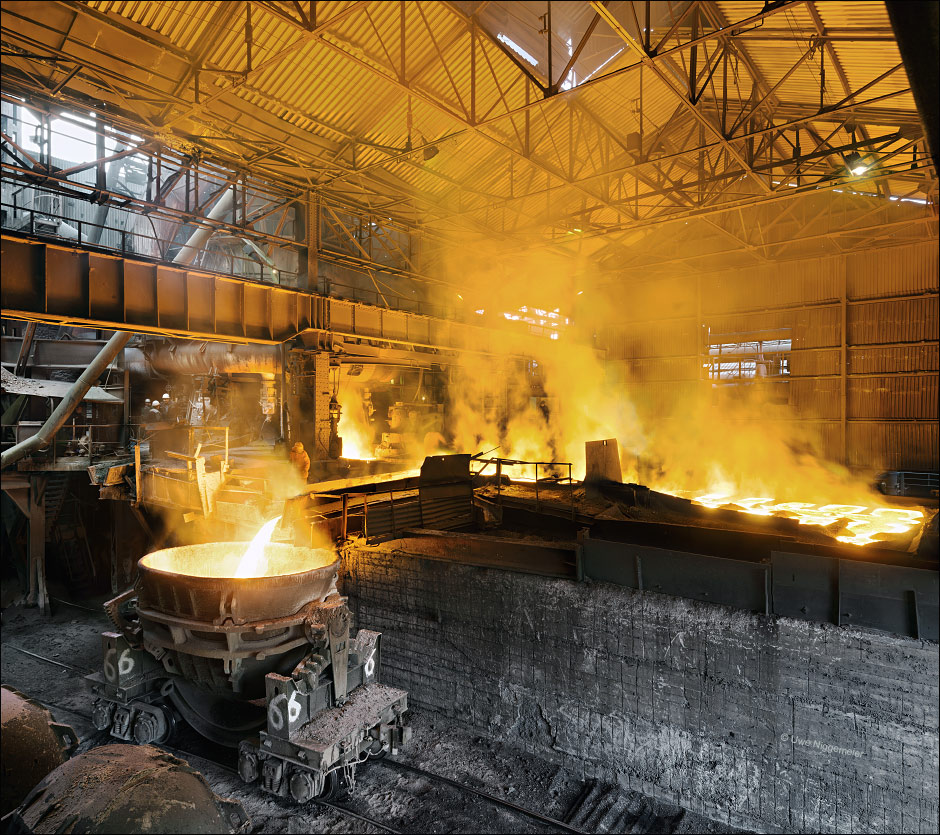All sites in the stahlseite-archive can now (again) be located on a map.

Eisenwerk Brühl south of Cologne, Germany runs one of the largest cupola furnaces in Europe.
Installed in 1981 it delivers 90 tons of hot metal each hour.
Up to 26000 engine blocks can be casted daily.
The foundry was established in 1927 by Georg and Maria Sandmann.
Right from the start the main products were cast iron engine blocks for the car industry.
It is said that one out of five blocks in the world comes from Brühl.
Further images.
Deep down in southern Russia, close to the Kazakh border, the Ural Steel mill in Novotroitsk was founded in 1955 under the name Orsko-Khalilovsky Iron-and-Steel Works.
In the same year blast furnace no. 1 went into production.
The first steel was produced at open-hearth furnace no.1 in 1958.
In 1960 the 2800-mm plate rolling mill no.1 was installed.
A section rolling mill was put into operation in 1969.
In 1978 a 800-mm wide strip universal rolling mill was commissioned .
The EAF Shop was built in 1981.
1983 – The first continuous casting machine was put into operation at the EAF shop.
Today Ural Steel runs a coking plant,four blast furnaces, two electric arc furnaces (100 ton each) and four rolling mills.
Further images at Stahlseite.
1: Hochofen IV. 1972-1999.
2: Hochofen VI. 1965-1976
3: Hochofen VII(alt) 1962-1976
4: Roheisenmischer
5: SM-Stahlwerk 2. 1912-1980
6: SM-Stahlwerk 3. 1956-1982
7: Thomasstahlwerk. 1928-1967
8: Elektrostahlwerk. 1955-1985
9: Blockwalzwerk. 1900-1983
10: Fertigstrasse (Schwere Profile). 1900-1968
11: Walzwerk III (Halbzeug). 1888-1966
12: Walzwerke IV/V. -1966
13: Kontinuierliche Halbzeugstrasse. 1955-1983
14: Walzwerk VIII. (Feinstahl). -1957
15: Feineisenstrasse. 1957-1983
16: Warmbreitbandstrasse. 1958-2001
17: Kaltwalzwerk
18: Drahtverfeinerung
19: Schwellenschweisserei
20: Lehrwerkstatt
21: Feuerfest- Steinfabrik
22: Gaszentrale
23: Sauerstoffanlage
24: Walzendreherei
25: Sinterbänder 1/2
26: Sinterband 3. 1961-
27: Zementfabrik
28: Lok-Werkstatt
Some images at Stahlseite.de .

The image done in 1953 shows the August Thyssen Hütte steel works in Duisburg Hamborn, Germany.
The furnaces shown are, left to right: 7,6,5,4,3,2 . Number one is hidden by the steam cloud from the attached coking plant August Thyssen. Blast furnaces 8 and 9 are to the left and not included. In the center of the image the headgear of coal mine Friedrich Thyssen,shaft 7 is to be seen.
Some more recent images of the mill at Stahlseite.
The famous German industrial architect built this melt shop in 1957 for Phoenix Rheinrohr in Duisburg, one of the largest German steel companies of that time. It was equipped with three Thomas converters and one modern oxygen converter.
The building underwent several changes over the years especially when it was transformed into a BOF shop in 1969.
Nowadays the ArcelorMittal Ruhrort plant runs a steel making shop with two 140 ton BOF vessels (and one in reserve), two continuous casters and a two stand billet mill. Hot metal comes from the ThyssenKrupp steel company in Duisburg via bottle cars.
Further images on my site.
The blast furnaces No.1&2 at Wheeling Pittsburgh’s former Steubenville North plant will be chopped down by an implosion demolition in June.
Furnace No.1 was built by the La Belle Iron Works in 1901. It was in operation until May 2005 when it was the oldest active blast furnace in the U.S. . It has a hearth diameter of 7,5 meters and a working volume of 1050 m³.
The No.2 furnace was built in 1904 and idled earlier.
The image was done in April 2004.

© Ironbridge International Institute for Cultural Heritage
I ever visited is located in the southern Ural, Russia.

The 250m³ (9000 cu-foot) furnace produces ferromanganese casted in pig beds.
The Satka Iron Smelting Works is the oldest existing iron producer in the Ural and among the first to be built in Russia.
Settled on the banks of the Bolshaya Satka river the mill went into production in 1758 founded by Baron Stroganov.
Two blast furnaces and 12 hammers were in operation.
In the 1860ies a puddling steel mill was added.
Since 1910 ferro alloys were produced.
In the 1930ies more than 1300 people worked in the mill, cast iron became the major product.
After financial troubles the plant became partly idled in the 1990ies until the Ivanov family coming from the Swerdlowsk region took over in 2001 annd decided to switch production to high carbon ferromanganese an alloying element for the steel industry.
Satka Iron Smelting Works today runs two blast furnaces of 250m³ and 350m³.
Further images at Stahlseite.